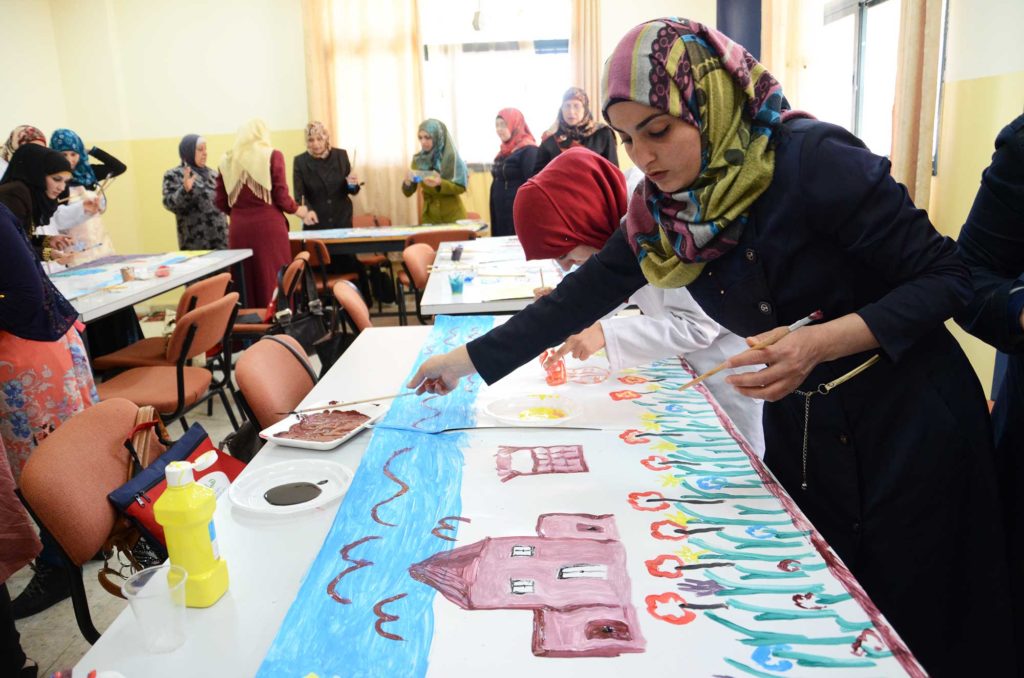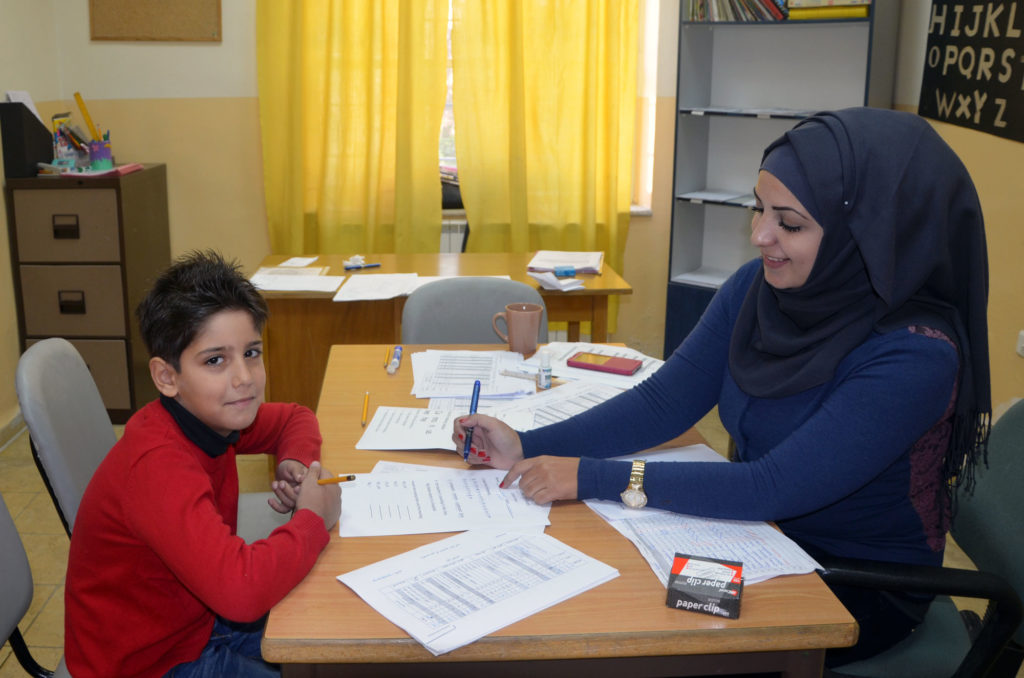May, 2011
Throughout this month, I introduced around 160 preschoolers in Bethlehem and Nablus to the camera, its basic parts and what it can do.
Many of these children come from very deprived backgrounds, where even imagination is a luxury, let alone a camera.
Imagine living in a refugee camp in a shabby one-room house with a large family, poor ventilation and hygiene, little food, no infrastructure, and no place to play, but the narrow, unpaved alleyways of the camp. That’s where the children of New Askar Refugee Camp Preschool live and grow. Handing them a camera was like opening a window in their minds into a limitless, magical world away from the constraints and smallness of the camp.
I couldn’t wait to teach the preschoolers about cameras.
During my workshops, everything was fascinating to these kids – the light streaming from the projector, the huge projected pictures on the screen, and the fun we had moving the images all the walls around the room. I had some kids stand at a distance facing the projector, so that the projected picture would wrap around their bodies, something the preschoolers found absolutely magical. The picture of Nidal that had just been on the wall was now on Tala’s stomach, then Ahmad’s back, and when I blocked the projector’s light with my hand, the picture disappeared. How did that happen?
Through learning about their eyes, and why they see so clearly at daytime, they were able to understand the concept of the camera. They learned about light and absence of it. They rediscovered their eyelids and how good they are at keeping the light away at night when it’s bedtime. But, most importantly, the children were able to connect all that with how a camera functions. “The camera is like an eye,” they concluded.
Each child got a chance to hold a professional camera, and feel its weight in their hands. Many even got to twist the camera zoom-in lens, and observe how it grew and declined in length. They were able to understand theoretical concepts such as length and distance.
Finally handing them their own camera to use was a momentous and long-anticipated moment for most of them, as it was the very first opportunity for them to take pictures all by themselves. Excitement was written all over their faces as they received the cameras.
After a good amount of time taking photos, we sat together and looked at all of the images. Many were really impressive. The kids looked at each photo with pride, as if it was the product of a collective effort. All they could think of later was when they would get to hold the camera and take pictures again. It was truly rewarding to hear that.
The camera lens alone expanded their imagination and turned their world into a fascinating place. Just imagine what other forms of art could do, and what other magical places art could take them to.
Nada is Anera’s communications officer in Jerusalem. In 2013, she led a very different kind of training. This one was on writing success stories and was for adults involved in agricultural development in the West Bank. Read about it >>


